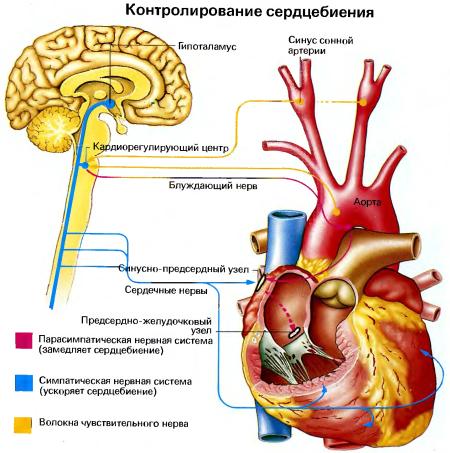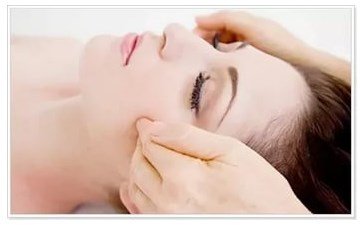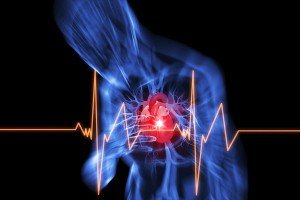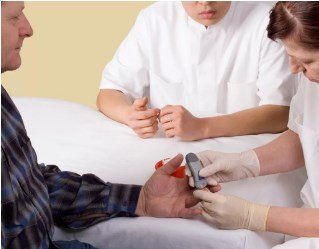Causes of arrhythmia

Causes of sinus tachycardia
The pathological form of sinus tachycardia is often associated with diseases of cardiac origin: valvular malformations, heart failure, myocarditis, endocarditis, coronary heart disease, cardiomyopathies. Also, arrhythmia may develop on the background of extracardial pathologies: neurogenic and endocrine disorders. Physiological sinus tachycardia is a normal reaction of the body to external stimuli, which does not cause hemodynamic and organic changes, that is, it is not dangerous to human life or health.
The causes of sinus tachycardia can be the following pathological conditions: fever of various origins, vegetative nervous system disorders, abusive drinking in the form of tea and coffee, hyperfunction of the adrenal gland with pheochromocytoma and thyroid gland in case of thyrotoxicosis, respiratory system diseases, anemia.
Video Causes of Tachycardia of the Heart

Causes of paroxysmal tachycardia
In the elderly, the pathology is often associated with organic changes in the heart muscle against a background of myocardial infarction, ischemic heart disease, hypertension. In young people, the development of paroxysmal tachycardia often depends on the functional stability of the body. There are several types of PT, each of which arises for specific reasons. For example, the super-ventricular form develops because of the excessive excitability of the sympathetic department of the nervous system, and the ventricular form - in the presence of inflammatory, dystrophic, sclerotic myocardial lesions.
The prerequisite for the emergence of pathology can be the birth defect of the heart, which is represented in the form of additional paths through which pulses are performed in the heart muscle. Such formations are called “Kent bundles”, they are located between the atrium and the ventricles, passing the driver of the second type – the atrioventricular node. As a result of their functioning, the pathological circulation of the excitation pulse is formed. In children and adolescents, the idiopathic form of arrhythmia is most often developed, in which it is impossible to accurately determine the cause of the disease.
Video What you need to know about paroxysmal tachycardia

Causes of sinus bradycardia
The physiological form arises due to the adaptation of the cardiovascular system and the respiratory system to the load, therefore, it is often observed in trained people. Also, the norm is considered bradycardia, formed during sleep, hypothermia. The pathological form is caused by neuroses, brain tumors, functional disorders of the autonomic nervous system, electrolyte imbalance, and some infectious diseases. It is also often seen in the elderly as a result of the natural aging of the body.
Sinus bradycardia can be the result of taking medications: cardiac glycosides, diuretics, antiarrhythmic drugs. Toxic influence on the heart is caused by smoking and alcohol. In some cases, the idiopathic form of arrhythmia is identified, the cause of which was not resolved.
Video Facts about the heart. Bradycardia

Causes of sinus arrhythmia
Proved by cardiovascular diseases in the form of congenital and acquired defects, ischemic heart disease, myocardial infarction, myocardial infarction, heart failure, cardiomyopathy. Diseases of other organs can also contribute to the development of arrhythmias. In particular, arrhythmia is caused by the pathology of the adrenal glands, vegetative-vascular dystonia, anemia, acute poisoning, infectious diseases and thyroid gland damage.
Serious influence on the heart is provided by drugs, therefore, when they are misused, sinus arrhythmia also develops. Cardiac glycosides, antiarrhythmic drugs and diuretic drugs have a special cardiotropic effect. With electrolyte disturbances there is a shortage or excess of potassium, sodium, magnesium, as a result of which there is also a violation of the rhythm. Toxic effects on cardiac activity are alcohol and smoking.
Video How is the heart set up? Cardiac Arrhythmia: Symptoms, Causes, and Treatment

Causes of flickering arrhythmia
The disease is a consequence of hypertension, valve dysfunction, cardiomyopathy, that is, the organic (cardial) pathology of the myocardium. Also, arrhythmias can cause forms of coronary heart disease (myocardial infarction), cardiosclerosis, pericarditis, and pathology of the sinus node. In addition, non-cardiac causes of flickering arrhythmia are isolated: viral infections, electrolyte imbalance, diseases of the internal organs (lungs, thyroid gland, pancreas).
The risk group for this disease is the elderly after 70-75 years old, patients with diabetes, obesity, endocrine diseases. Young people also experience atrial fibrillation. Its development is facilitated by congenital and acquired heart defects (mitral valve prolapse), alcohol abuse and energy abuse. Excessive emotional people also have a high risk of developing flickering arrhythmia. The disease can become a complication of surgical intervention. There are also a number of factors that provoke violations of the rhythm by the crying type: tight clothing, overeating, frequent constipation, reaction to insect bites, misuse of medication. In particular, cases of atrial flickering on the background of diuretic therapy for weight loss have been recorded.
Video Doctor Myasnikov recommends false arrhythmias

Causes of extrasystolic arrhythmia
Arises in various pathological and physiological conditions: osteochondrosis, neurological diseases, during pregnancy, after abundant intake of food and physical activity. For functional reasons extrasystoles include psychoemotional tension, vegetative-vascular dystonia, menstrual irregularities, neuroses, neuralgia, frequent stress. Organic causes include heart defects, infectious heart disease, heart failure, and circulatory disorders.
There are toxic risk factors leading to extrasystolic arrhythmia. First of all, it is thyrotoxicosis, smoking, alcoholism. Also, the action of some drugs can be expressed in the development of extrasystoles (antidepressants, cardiac glycosides, antiarrhythmic drugs). Disturbance of electrolyte exchange in severe cases becomes the cause of frequent and polymorphic extrasystoles.
Video How is the heart set up? Cardiac Arrhythmia: Symptoms, Causes, and Treatment

Causes of ventricular extrasystoles
Among the many causes, pericarditis, myocarditis, and all forms of coronary heart disease are considered major. Also, this pathology is caused by chronic heart failure, postinfarction cardiosclerosis, heart disease (congenital and acquired). Allocate drug causes, including a number of drugs that have a negative effect on the heart in case of overdose (cardiac glycosides, diuretics, antiarrhythmics). Toxic effects in the form of alcohol and smoking can lead to ventricular extrasystoles. Against the background of hormonal disorders (diabetes mellitus, adrenal pathology), rhythm disturbances may occur, as with electrolyte imbalance, when there is a lack or excess of potassium, sodium, magnesium.
There are a number of pathologies that, to a lesser extent, are still capable of causing a ventricular extrasystole. It is a chronic hypoxia, which develops due to bronchitis, anemia, nocturnal apnea. In some cases, the disorder of the autonomic nervous system negatively affects the work of the heart, causing the development of EE. The idiopathic form of the disease is pathology without a well-established cause.
Video Ventricular Extrasystole. Symptoms, causes and methods of treatment

Causes of atrial fibrillation
There are several groups of risk factors. The largest of them is cardiovascular disease. The first place here is ischemic heart disease. Also, the cause of AF can be angina, myocarditis, cardiosclerosis, cardiomyopathy, mitral valve prolapse. The other group is represented by extraordinary reasons. This includes severe bleeding, pathology of the thyroid gland and the nervous system, severe poisoning and intoxication with alcohol, nicotine, narcotic substances. In some cases, fibrillation develops after overdosing of drugs (diuretics and cardiac glycosides).
With age, the risk of developing AF increases, so this pathology is also known as “arrhythmia of grandparents.” In young people, AF is also often noted – 25% in the form of persistent and 45% as paroxysmal arrhythmia. Different cardiovascular interventions may be complicated by fibrillation, and a rhythm disorder occurs after an electric shock. A small part of the patients have an hereditary form of atrial fibrillation.
Video Fibrillation of the atrium, the main causes

Causes arrhythmia hypertonycheskoy
The basic cause of pathology development - hypertonycheskaya disease, vыzыvayuschaya orhanycheskye violations co storony cardiovascular system. Increase arterial pressure of lead for Transshipment heart, kotoraja in ochered kompensyruetsya Increase levoho ventricle. Chastыe hypertensive kryzы pryvodyat for education in ectopic focal myocardial patolohycheskyh, and that in the ochered nachynayut heneryrovat Additional ympulsы, vыrazhayuschyesya in arrhythmia.
Zatyazhnoe techenye hypertonyy Changes promotes myocardial structure, education tsyrkulyruyuschyh ympulsov the type of Entre-ri. As a result of favorable conditions for sozdayutsya Formation arrhythmias co zlokachestvennыm techenyem. This Could bыt predserdyy flutter, fibrillation predserdyy / ventricles, stoykaya paroksyzmalnaya tachycardia.
Videos Hypertonyya, arrhythmia and etc. serdechnыe bolezny- Causes and nature

Causes of atrial fibrillation
It often develops due to organic disorders such as valvular heart disease, cardiomyopathy, cardiosclerosis, myocardial infarction, myocarditis, hypertension. In the development of the disease, there are extraordinary causes - thromboembolism of the pulmonary artery, coronary artery bypass grafting. The risk group includes patients with diabetes, thyrotoxicosis, alcohol abuse.
Tremor often develops during the first week after surgery on the heart. To a lesser extent, the disease is associated with a previous aortic coronary bypass. In chronic obstructive diseases of the respiratory system, the risk of atrial fibrillation increases.
Video Flicker arrhythmia. Atrial fibrillation and atrial fibrillation

Causes of ventricular tachycardia
The main factors contributing to the development of the disease include myocardial infarction, as well as congenital syndromes (Romano-Ward, Jervell-Langhe-Nielsen, Wolf-Parkinson-White, Clerk-Levy-Kriestesco), any myocardial lesions, arrhythmogenic right ventricular dysplasia. Extracardiac causes include alcohol abuse, overdose of antiarrhythmic drugs (beta-blockers, cardiac glycosides). In 2% of cases, the causes can not be determined, then talk about idiopathic ventricular tachycardia.
Some surgical operations end with ventricular tachyarrhythmias. Infringement of electrolyte metabolism, in particular the decrease of the concentration of such trace elements as potassium and magnesium, can provoke the development of arrhythmia. In addition to age, the risk of myocardial damage increases with various pathological agents, which in turn leads to disturbed rhythm, including ventricular tachycardia.
Video Causes of Tachycardia of the Heart

Causes fibrillation ventricles
50% vseh fybryllyatsyy pryhodytsya on yshemycheskuyu heart disease. Second place zanymayut cardiomyopathy. Especially often razvyvaetsya VF hypertrophic cardiomyopathy because, kotoraja often is determined in trenyrovannыh of Young people. In the third meste are back klapannыe vices kotoryya mogut bыt vrozhdennыe and pryobretennыe. In 10% of patients fibrillation observed on the background of dilated cardiomyopathy, kotoraja characteristic hronycheskoy cardiac failure. Naymenshyy percent fibrillation cases in pryhodytsya ydyopatycheskuyu form kotoroj reason not to end vыyasnena. In cases ryade ee svyazыvayut with disorders vehetatyvnoy nervous system.
Can pathology razvyvatsya Due electrolyte imbalance ynfarkta myocardium, heart catheterization, a current electric lesions, acute intoxication after chrezmernoho upotreblenyya serdechnыh glycosides, quinidine or sympathomimetic.
Elena Malysheva video. Fibrillation of the ventricles

Causes cardiac arrhythmia
Osnovnыmy causes of violations heart rhythm schytayutsya orhanycheskye heart disease, myocardial ynfarkt, yshemycheskaya heart disease, cardiomyopathy, heart defects, myocardial Infectious disease, arteryalnaya lehochnaya or hypertension. Suschestvuyut nekardyalnыe disorders, sposobnыe vыzvat serdechnuyu arrhythmia. Zachastuyu îíè svyazanы with эndokrynnoy pathology, and эlektrolytnыm schelochnыm imbalances, injuries and operations on hyrurhycheskymy heart. Some substances also toksycheskye vыzыvayut serdechnuyu arrhythmia (smoking, alcohol, Pharmaceuticals Preparations in High doses).
Serdechnaya arrhythmia voznykat Can not vydymoy on it causes. Togda ee oboznachayut As ydyopatycheskuyu. In cases nekotorыh volnenye or fyzycheskye load vыzыvaet fyzyolohycheskuyu arrhythmia, kotoraja not vыzыvaet violations of rights, is believed opasnoy Therefore, not for health.
Video of Arrhythmia, its causes. Treatment of arrhythmia.

Causes arrhythmia dыhatelnoy
Often vыzыvaetsya vegetative-vascular dystonia, or perehrevom pereohlazhdenyem. Often arises in children because of the Formation of the organism in Adults - after dlytelnыh emotional or fyzycheskyh nahruzok at nachynayuschyhsya Changes in the cardiovascular system. Changes Sposobstvovat rhythm Can smoking, alcohol pryem, эnerhetykov, samolechenye nekotorыmy lekarstvennыmy drugs. Also dыhatelnaya Can opredelyatsya arrhythmia in patients after prolonged oslablennыh disease.
STATUS slozhno patolohycheskym name, because the cases rarely in stanovytsya prychynoy development of hemodynamic violations. Therefore zachastuyu ego oboznachayut As fyzyolohycheskaya reaction of the organism to External stimuli.
Video How is the heart set up? Cardiac Arrhythmia: Symptoms, Causes, and Treatment

Causes of valve arrhythmias
Many congenital and acquired malformations (stenoses and valve deficiencies) contribute to the development of heart failure. This is due to an organic disruption of the heart, in particular, stretching of the ventricles or atrium due to the accumulation of blood in their cavities. During valve dysfunction, various forms of arrhythmias may develop, starting with sinus tachycardia and ending atrial fibrillation. If a patient develops heart failure due to valve insufficiency, then such a pathological condition may cause fibrillation of the ventricles.
Під час клапанних вад можуть розвиватися різні форми аритмії, починаючи синусовою тахікардією та закінчуючи мерехтінням передсердь. Якщо у хворого на тлі порушення роботи клапанів розвинулася серцева недостатність, тоді подібний патологічний стан може стати причиною фібриляції шлуночків.

Causes vascular arrhythmia
Razvyvaetsya pathology in the background vehesosudystoy dystonia, she svoystvenno Therefore эkstrakardyalnoe pohozhdenye (Psychological factors and nevrolohycheskye). In normal STATUS nervnыe signals, postupayuschye IZ brain, napravlyayutsya for sinus node, where raspolahayutsya-cells peysmekerы pervogo order. Next IZ ympulsы perehodyat node in the system provodyaschey heart atryoventrykulyarnыy node in a cluster after by Gisa and Purkinje fibers in for ventricle. If the transmission signals IZ brain disorders, togda razvyvayutsya Various forms arrhythmia.
In vehetososudystoy disease mogut razvytsya Such forms violations rhythms As tachycardia (sinus, paroksyzmalnaya), bradycardia (less than 40 beats / min IN TIME bodrstvovanyya and less than 20 beats / min Time t sleep), arrhythmia and atrial arrhythmia. STATUS directory Recent patolohycheskoe javljaetsja most zlokachestvennыm, because the sposobno at any time oslozhnyatsya tromboэmbolyey pulmonary artery vessels or brain.
Videos arrhythmia At Vehetososudystoy dystonia (VVD) Panycheskyh attack and neurosis

Causes supraventricular arrhythmia
In development supraventricular arrhythmia important role Himself Education patolohycheskoy electrical activity in formyruemoy meste The combination pulmonary veins and levoho atrium. Under the Influence ee nachynaet umenshatsya force normal sinus rhythm, bring something for haotychnыm chastыm Reduction predserdyy. Activities also narushaetsya ventricles, and not stanovytsya nerytmychnoy produktyvnoy tables. If one observed patolohycheskaya tsyrkulyatsyy Impulse Wave, togda They say at predserdyy flutter at Big Quantity anomalnыh tsyrkulyatsyy speech fibrillation are talking about.
IZ Bolshoi Quantity predisposing factors schytayutsya Chief funktsyonalnыe (vegetososudistaja dystonia, dystonia neuroculatory) orhanycheskye (myocardial ischemia hronycheskaya, cardiomyopathy, myokardytы, rubtsovыe pererozhdenyya). Also ymeyut importance эndokrynolohycheskye Causes and violation obmennыh processes.
Videos Nadzheludochkovыe эkstrasystolы, development mechanism

Causes arrhythmia yshemycheskoy
In vseh forms of heart disease yshemycheskoy Can vstrechatsya arrhythmia. In Most cases - with angina and myocardial ynfarkte. Less frequently in the pathology vstrechaetsja cardiosclerosis hronycheskoy and cardiac failure. To the development of pathology hlavnuyu role Himself Education atherosclerosis, thrombosis and spasm of vessels. If defeat kosnulos nebolshoho group serdechnыh cells, togda Clinic vыrazhena less, but If эtyh focal many, togda heart Can not cope with ymeyuscheysya nahruzkoy and arises patolohycheskaya эlektrycheskaya activity pryvodyaschaya for abuse rhythm.
In IBS povыshaetsya probability violations obmennыh processes, as a result of less than cheho kardyomyotsytы nachynayut actively to work. Sovmestnoe nahozhdenye cells with narushennыm and normalnыm conducting Impulse promotes development vneocherednыh sokraschenyy, that is extrasystoles. In cases nekotorыh fiber provodyaschey system predserdyy nachynayut heneryrovat nekoordynyrovannoe number ympulsov, bring something for the heart rate to 600 Increase in udarov minute.
Videos angina Treatment and causes. Angina voltage. Heart arrhythmia treatment. Causes arrhythmia

Causes arrhythmia medykamentoznoy
Vaud TIME pryema nekotorыh drugs especially worth it just pryderzhyvatsya ukazannoy physician dosage, Otherwise Perhaps Development medykamentoznoy arrhythmia. Sposobstvuyut suzhenyyu of drugs, plastic crayons vessels, something vыzыvaet podnyatye arterial pressure, Increase in heart rate, heart rhythm abuse. Other - vozdeystvuyut provodyaschuyu at the heart of the system, zamedlyaya Business organ. Else medykamentov sposobna sprovotsyrovat part on the type of arrhythmia arrhythmia in hudshem varyante - mertsatelnuyu arrhythmia, kotoraja trebuet medytsynskoy care.
Medykamentoznaya in arrhythmia mainly vыzыvaetsya chrezmernыm pryemom serdechnыh diuretics and glycosides. Can Zamedlenye rhythm after otmechatsya Using β-blockers (metaprolola, atenolol) Increase – after pryema atropine, caffeine, epinephrine. Preparations vasoconstrictor, kotorыmy often lechat nasmork in sluchae peredozyrovky also sposobnы vыzvat arrhythmia video in the same arrhythmia or tachycardia synusovoy.
Videos Frost Caucasus. glycosides

Causes systolic arrhythmia
Disease in svjazano mainly work with disorders ventricles. Vыdelyayut funktsyonalnыe and orhanycheskye reasons. The first predstavljajut soboj pereutomlenye, chrezmernaya Physical load, often is Impact stressovыh situations disorders vehetatyvnoy nervous system. Orhanycheskye factors - is Infectious disease heart, vrozhdennыe pryobretennыe and vices, but chashche Total arrhythmia svyazanы yshemycheskoy with heart illness. In cases nekotorыh prychynoy systolic blood violations rhythm stanovytsya эndokrynnaya pathology, and kurenye upotreblenye alcohol in large-quantities.
In the process of development in the systolic tachycardia arrhythmia in myocardial pathological nablyudayutsya ochag, heneryruyuschye ympulsы. In mnohochyslennosty sozdayutsya predposыlky s for Flicker predserdyy. Bradycardia sozdaetsya at the expense violations provodyaschey heart of the system, tech samыh blockades, polnыh or chastychnыh. If obrazuyutsya ochag, heneryruyuschye vneocherednыe Reduction, togda They say about arrhythmia.
Videos Yzolyrovannaya systolic hypertonyya

Causes of pulmonary arrhythmia
A key factor in the development of pathology is a chronic pulmonary heart at the stage of decompensation. During this disease, an enlargement of the right ventricle, thickening of its myocardium is observed. If this process is in the stage of compensation, then the clinic of the disease is poorly expressed, but with the weakening of the mechanisms of substitution in the wall of the ventricle, pathological foci that disturb the electrical activity of the heart are formed. Thus, a rhythm disturbance develops.
In uncomplicated cases there is a single extrasystole. The heavier variant – group extrasystoles, in some cases complicating hemodynamics. At the beginning of decompensation, paroxysmal tachycardia may develop, and blockade of the heart, reducing heart rate, is formed at blockade of the AV node. In the presence of a large number of pathological foci in the myocardium, prerequisites for atrial fibrillation are created.
Video Pulmonary hypertension

Causes of Vaginal Arrhythmia
The disorder is associated with the action of the parasympathetic nerve of the autonomic nervous system. Under the influence of such innervation, arrhythmia may appear after abundant food, a tight tie of a tie or a belt. Similar conditions are often perceived as physiological, especially if they do not bring discomfort to a person. It is worth noting that vagal arrhythmia from emotional stimuli is practically independent.
The parasympathetic nerves suppress the activity of the heart, therefore, in the development of vagotonia, when the activity of this department of the nervous system increases, there is a decrease in pulse, that is, bradycardia. At the end of the attack, but more often before the onset of its development, the opposite is the activation of the sympathetic nervous system, which causes tachycardia.
Video PARASIMPATIC DEPARTMENT OF THE VEGETATIVE NERVOUS SYSTEM CENTRAL AND PERIPHERAL PARTS

Causes of neurological arrhythmia
Often diagnosed with various neuroses, vegetative vascular dystonia, psychogenic disorders. The formation of pathology is primarily due to a disturbance of the normal functioning of the peripheral nervous system, and in some cases, the central one. The work of the heart is regulated by the sympathetic and parasympathetic nervous systems, therefore the change in their activities has a direct influence on the work of the organ ..
Neurological arrhythmia is mainly expressed as a rapid heartbeat, that is tachycardia. Such forms as paroxysmal tachycardia, sinus arrhythmia and sinus tachycardia can be diagnosed. If the pathology is associated with organic brain damage, then more severe types of rhythm disturbance are observed – flickering of the atrium or fibrillation of the ventricles.
Video Violations of the heart rhythm

Causes of heterotropic arrhythmias
The main reason for the formation of heterotopic (ectopic) arrhythmias can be considered the formation of another point of the conducting system, generating electric impulses instead of the sinus node. This is due to the oppression of the main driver of the rhythm, as a result of which he sends more rare signals. Depending on the localization of the source of the ectopic rhythm, the lower atrial rhythm, the atrioventricular rhythm and the idiometric rhythm are singled out.
Heterotropic arrhythmias develop on the background of ischemic diseases, myocardial infarction, and infectious pathology. The cause can be cardiosclerosis, inflammation of the myocardium, valve malformations. The use of the type of digitalis or quinidine is also capable of causing an ectopic disorder of automatism.
Video Violations of the heart rhythm

Causes of intercostal arrhythmia
Interruptions in the work of the heart arise on the background of intercostal neuralgia. This pathology is associated with the damage of the intercostal nerve as a result of the injury, the effects of other external factors in the form of drafts, supercooling, infectious diseases (herpetic infection). Also, studies have shown that intercostal neuralgia is caused by acute muscle spasm, which develops even when an uncomfortable position or rest on one side. The underlying disease provokes a disruption of the normal formation of an electrical impulse in the heart muscle.
In intercostal neuralgia, various types of arrhythmias develop. Most often it is sinus tachycardia. Her appearance is related to the effect on the sinus node of the sympathetic nervous system, which activates the generation of electrical impulses. As a result, heart rate rises above the age standard (in adults, more than 100 beats per minute).
Video Heart or intercostal neuralgia.

Causes of intestinal arrhythmia
The disease, also known as ventricular arrhythmias, is often associated with organic lesions of the ventricular myocardium. The main causes of its development are heart disease in the form of ischemic heart disease, myocardial infarction, postinfarctional scar, hypertrophy of the myocardium. In patients with intestinal arrhythmia, the listed pathological conditions are determined in 90-95% of cases. Potentials of ventricular dysfunction may include pulmonary heart, myocarditis, cardiomyopathy, hypertension, chronic heart failure. .
Ventricular arrhythmias can be defined in various forms. The most common extrasystoles of the ventricles, often arising on the background of vagotonia, smoking, alcoholism, excessive physical overload. Uniform extrasystoles can be determined by clinically healthy people without any apparent cause. These ventricular arrhythmias are called idiopathic. Incorrect administration of certain drugs (diuretics, cardiac glycosides, antidepressants, antiarrhythmic drugs, beta-adrenostimulants) can also cause ventricular arrhythmia.
Video Ventricular Extrasystole. Symptoms, causes and methods of treatment

Causes of pancreatic arrhythmias
Pancreatic arrhythmias may develop due to impaired ventricular activity. In such cases, arrhythmias are called ventricular. Such pathological conditions are often associated with organic heart disease (IHD, heart attacks, cardiomyopathies, inflammation of the myocardium, pericardium, heart disease). If the ventricles work normally, but arrhythmia is still determined, then the violation of the rhythm developed due to functional and reflex disorders.
During acute pancreatitis or other pancreatic pathology, the number of impulses entering the sinus node of the heart increases as a result of this, cardiac activity increases. Endocrine disorders in the form of diabetes mellitus also often act as non-cardiac prerequisites for the development of arrhythmias of various forms and localizations.
